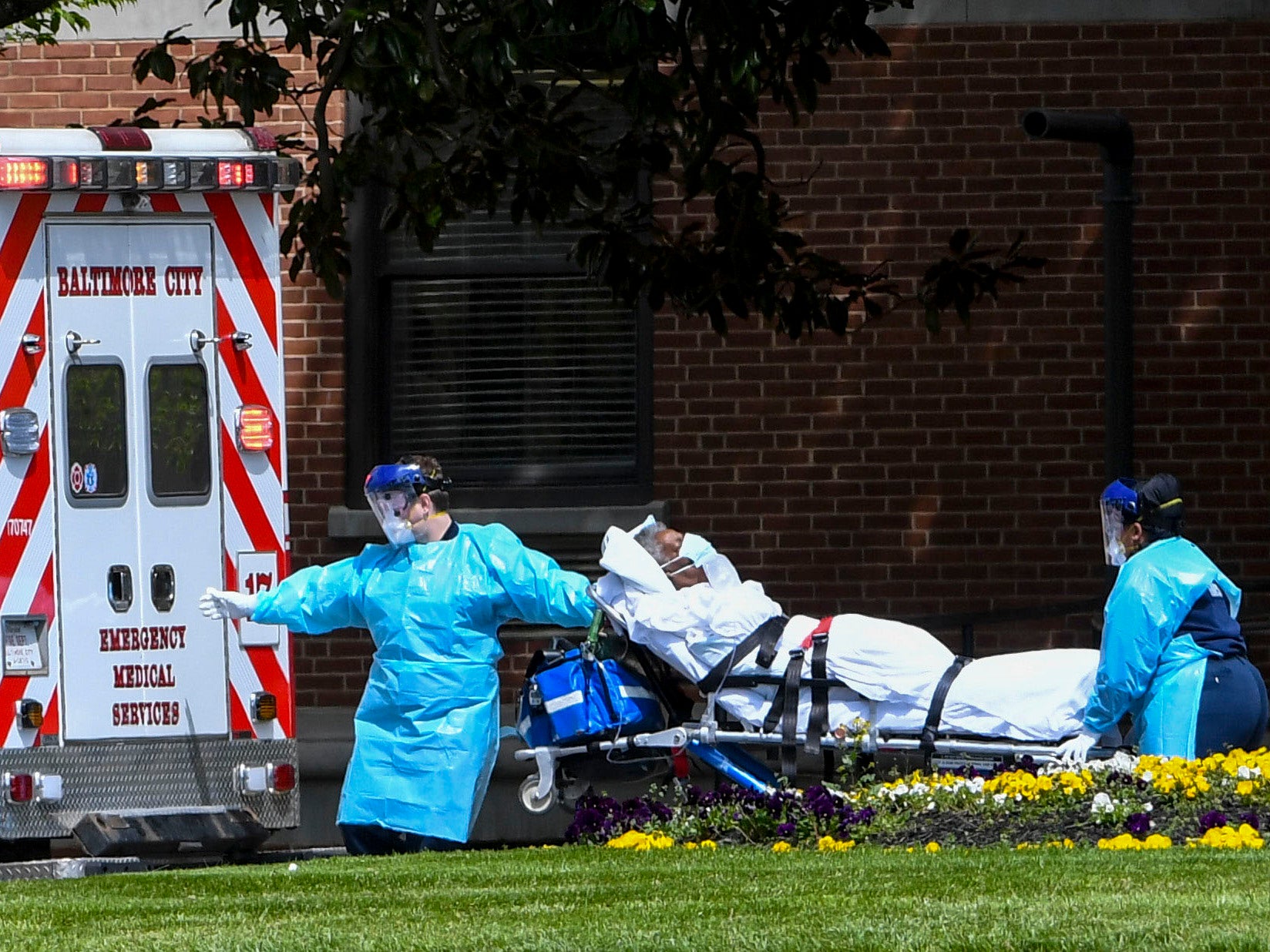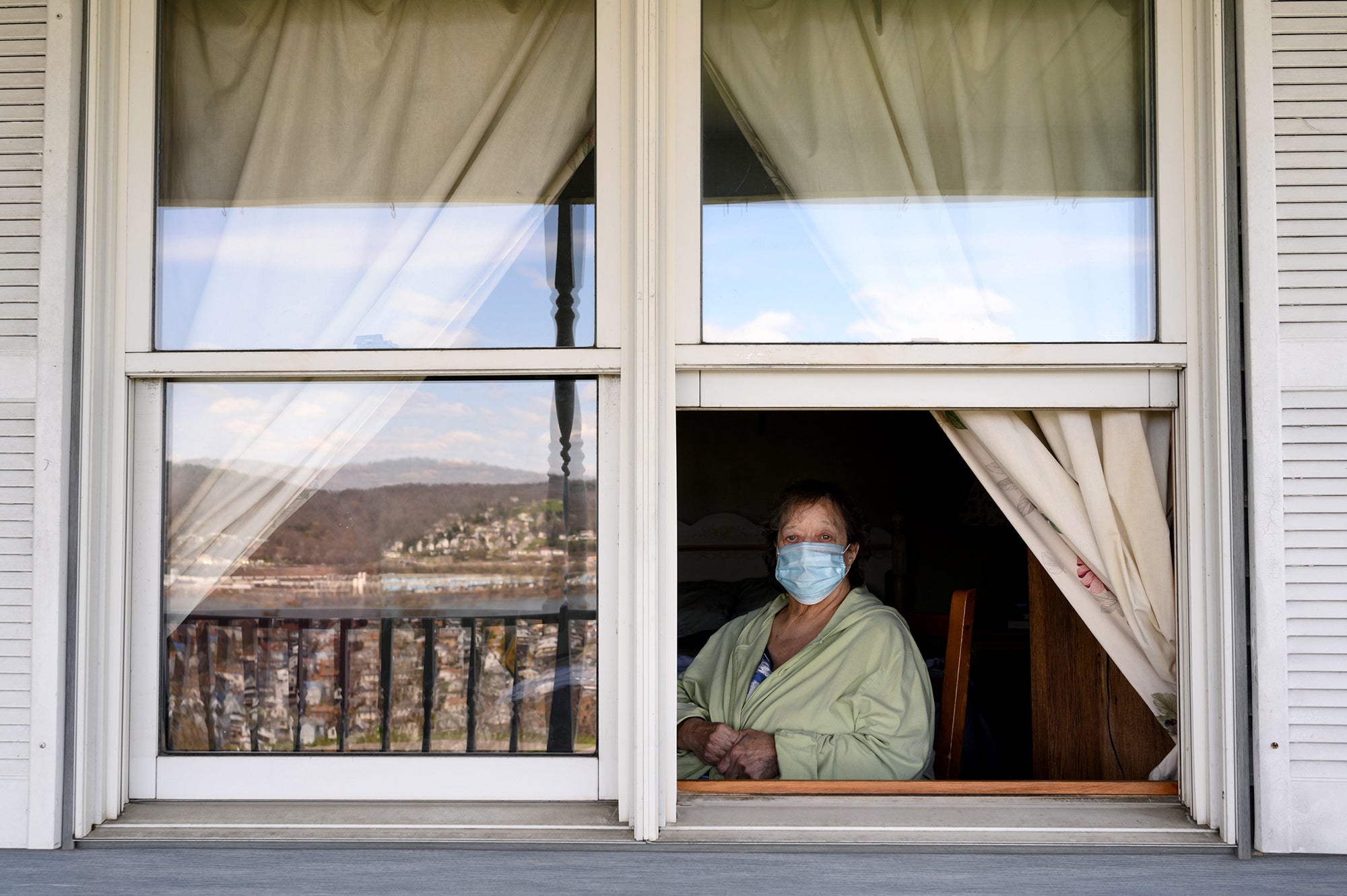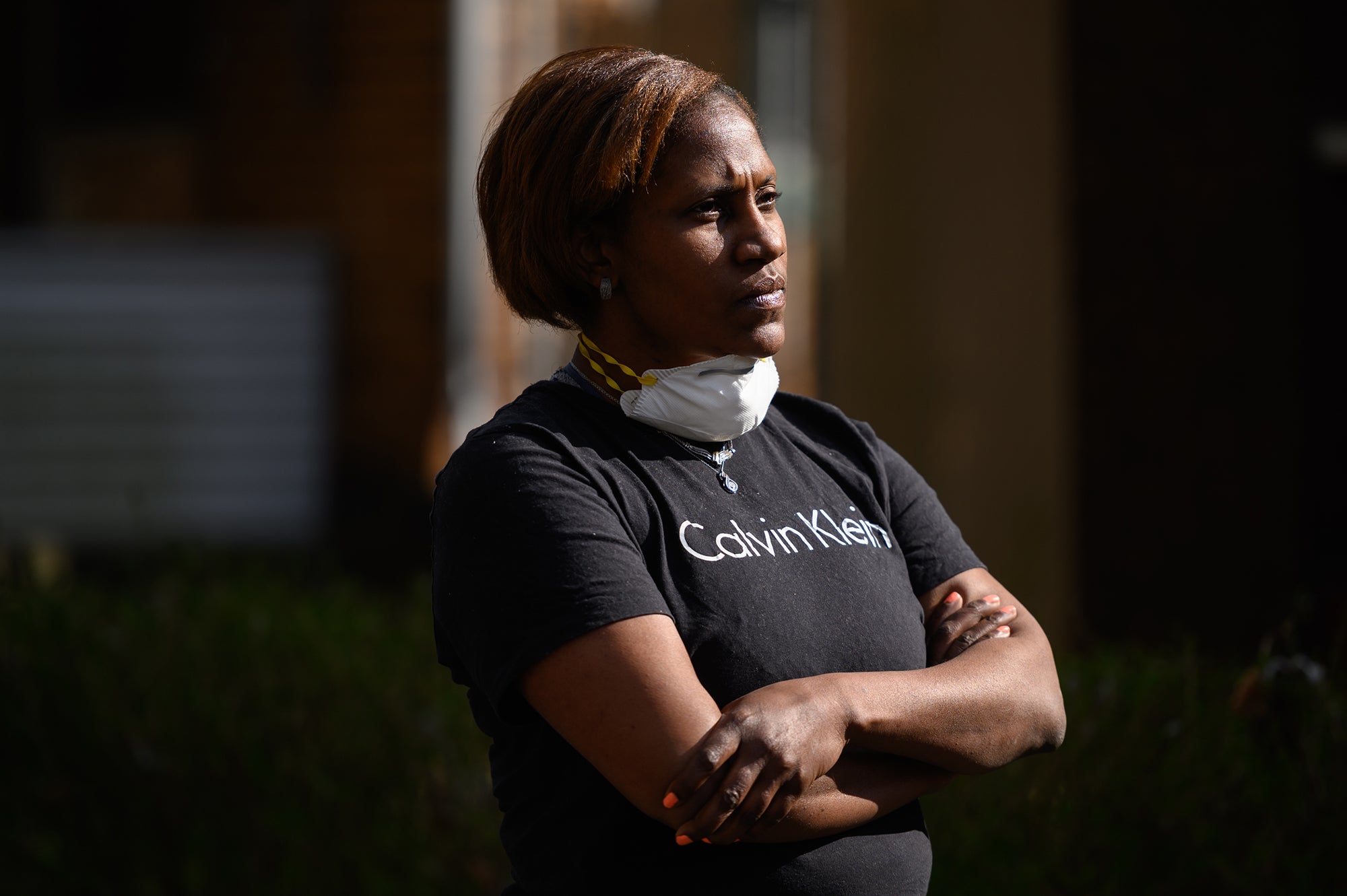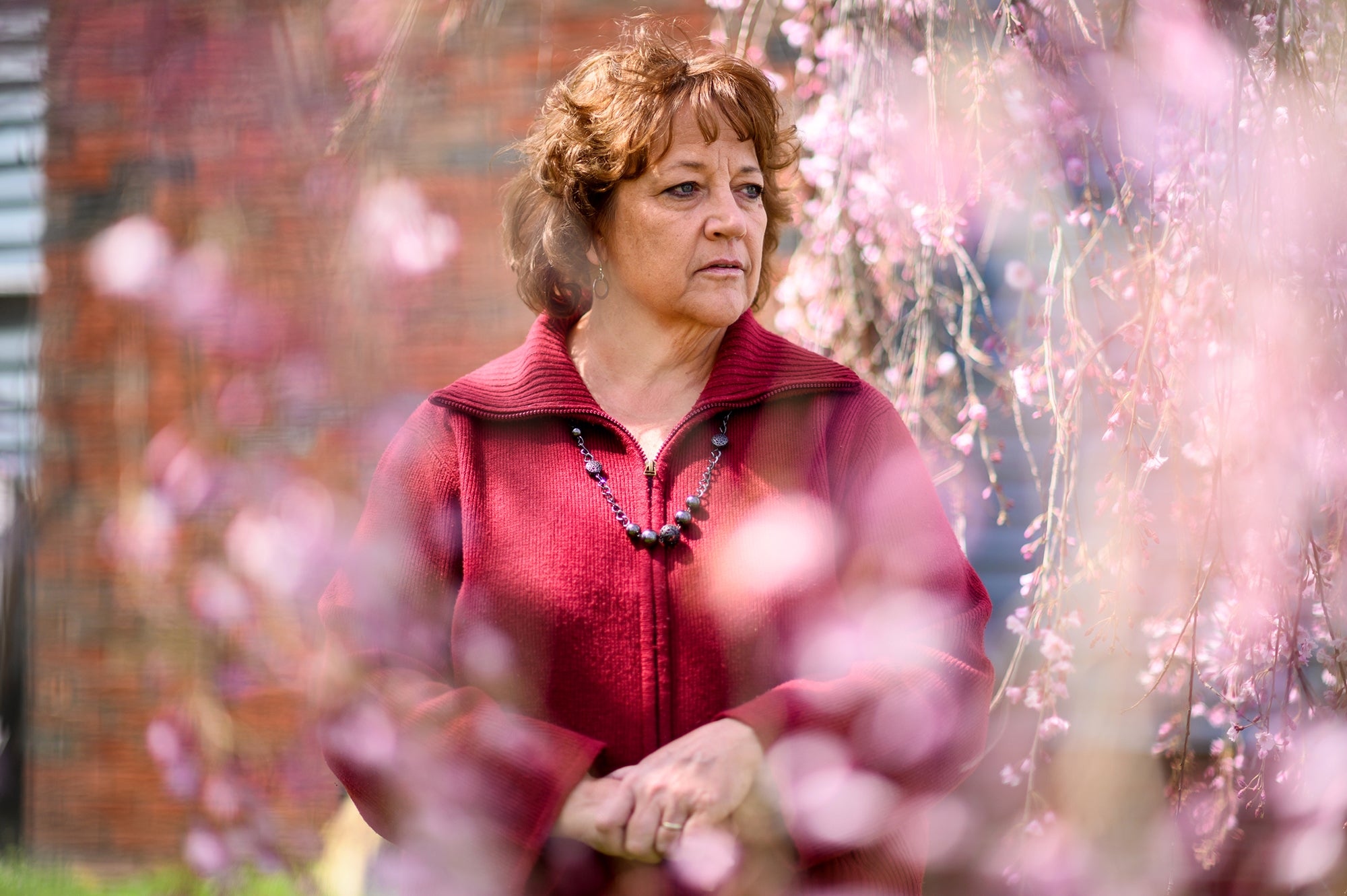Coronavirus: Hundreds of US nursing homes have repeatedly violated infection rules
Infection-control problems most common deficiencies identified at 15,000 nursing homes over the past four years, records show
Your support helps us to tell the story
From reproductive rights to climate change to Big Tech, The Independent is on the ground when the story is developing. Whether it's investigating the financials of Elon Musk's pro-Trump PAC or producing our latest documentary, 'The A Word', which shines a light on the American women fighting for reproductive rights, we know how important it is to parse out the facts from the messaging.
At such a critical moment in US history, we need reporters on the ground. Your donation allows us to keep sending journalists to speak to both sides of the story.
The Independent is trusted by Americans across the entire political spectrum. And unlike many other quality news outlets, we choose not to lock Americans out of our reporting and analysis with paywalls. We believe quality journalism should be available to everyone, paid for by those who can afford it.
Your support makes all the difference.Forty per cent of more than 650 nursing homes nationwide with publicly reported cases of the coronavirus have been cited more than once by inspectors in recent years for violating federal standards meant to control the spread of infections, according to a Washington Post analysis.
Since 2016, the nursing homes accrued hundreds of deficiencies for unsafe conditions that can trigger the spread of flu, pneumonia, urinary tract infections and skin diseases. Dozens were flagged by inspectors only months before the coronavirus pandemic struck the US.
Among the facilities with infection-control infractions: the Pleasant View Nursing Home in Mount Airy, in the state of Maryland, where 24 people had died as of Thursday the 16 April; the Canterbury Rehabilitation & Healthcare Centre near Richmond, Virginia, with 49 deaths as of Thursday; and the Brighton Rehabilitation and Wellness Centre in southwestern Pennsylvania, where officials have warned that all 750 residents and staff members could be infected.
It is difficult to say whether past violations contributed to current outbreaks or whether any level of preparation would have been enough to protect against a previously unidentified pathogen, but nursing home watchdog groups say the breakdowns have endangered older, vulnerable residents already more at risk of dying from the highly contagious virus.
“Nursing home residents had targets on their backs the moment the virus hit our shores,” said Mike Dark, an attorney with the nonprofit California Advocates for Nursing Home Reform. “There is an inertia about infection control and it’s too late to catch up.”
Thousands of coronavirus-related deaths have been linked to nursing homes; the state of New York alone earlier this week reported more than 2,400. At a nursing home in northern New Jersey, police found more than a dozen bodies in what was described as a “makeshift morgue".
The federal government and many states have not released the names of affected facilities.
Through state and county health departments and media reports, The Washington Post was able to identify 662 Medicare-certified nursing homes that have had publicly reported cases of the virus and analyse their track records.
The homes with a history of infection-control deficiencies span 35 states, with dozens in California, the state of Washington and Connecticut, according to inspection data from the Centers for Medicare and Medicaid Services (CMS), the federal agency that regulates nursing homes.
The hardest-hit state, New York, on Friday released only a partial list of nursing homes that have been affected by the coronavirus. Without a full list, The Washington Post has been able to identify only a dozen nursing homes in New York with repeated infection deficiencies.
The hundreds of citations touch on all areas of infection control, inspection records show. Some facilities failed to track residents with symptoms of infections. Others did not ensure that staff members changed soiled gloves, washed their hands or wore personal protective equipment. In some cases, providers used dirty or unsanitised equipment.
At Pleasant View nursing home, staff failed to put dates on oxygen equipment that requires regular changing or store personal urinals in a sanitary manner in a bathroom shared by eight residents, records show. At Brighton, in Pennsylvania, according to inspectors, officials failed to ensure that caregivers properly cleaned wounds, washed their hands or wore personal protective equipment. One aide left a wet sheet under a resident whose catheter was leaking.
When the coronavirus struck the nursing home, Keri Boyer said she braced for bad news.

“Once we got the phone call that there was a positive case, I told my husband, ‘My dad’s going to get it. I have no doubt in my mind',” said Ms Boyer, whose 73-year-old father, a Pittsburgh Steelers fan who retired from his job at a cement plant, was one of at least five Brighton residents who died from the virus.
“They had four people in a room,” Ms Boyer said. “That’s how my dad lived, with three other men in a room that was as big as a hospital room, separated by curtains. I sometimes feel like they were the dispensable ones.”
An official at Pleasant View said the nursing home declined to comment, and Brighton administrators did not respond to emails. An official with Canterbury nursing home said ownership of the facility changed in January.
“In the months prior to the Covid-19 pandemic, there were significant improvements in virtually every aspect of operations ... and there were also significant changes in facility leadership,” Canterbury administrator Jeremiah Davis said in a statement. “There has been material focus on placing the right people in the right positions, and a significant influx of new protocols prior to the outbreak.”
Industry leaders say even the strongest infection-control measures could not have prepared nursing homes for the onslaught of coronavirus and that facilities with limited personal protective equipment are doing what they can to protect and treat residents.
“Outbreaks are not the result of inattentiveness or a shortcoming in nursing homes,” David Gifford, chief medical officer at the American Health Care Association and the National Centre for Assisted Living, said in a statement. “It’s the combination of the behaviour of this virus and the unique threat it presents to the people we care for – older adults with multiple underlying health conditions.”
With fragile populations, shortages of personal protective equipment and staff members forced to juggle front-line work with the needs of their own families, nursing home residents were “essentially sitting ducks,” said Karl Steinberg, a San Diego-based geriatrician and palliative care specialist and president-elect of Amda: the Society for Post-Acute and Long-Term Care Medicine.
“A lot of facilities could do better,” he said. “But this virus is different. It’s insidious. We don’t know who has it. We don’t know who doesn’t have it. It could live in the air. It could live on surfaces. It’s highly improbable that ... the best in planning would have prevented this.”
Nursing home watchdog groups, however, say warnings went unheeded for years, even after the Obama administration in 2016 moved to strengthen infection-control practices in nursing homes.
In the past four years, infection-control problems were the most common deficiencies identified at 15,000 nursing homes nationwide, federal records show.
Three-quarters of nursing homes were cited at least once for infection-related infractions since 2016. Four in 10 were repeat offenders, flagged at least twice.
In Florida last year, a nurse failed to disinfect a blood-glucose meter in a facility with 23 diabetic patients; an inspector found one of the devices sitting on a cart, soiled with what appeared to be blood, federal inspection reports show. In California last year, administrators failed to screen dozens of staff members, including 15 licensed nurses and 13 nursing assistants, for tuberculosis and flu vaccinations. In Wisconsin in 2017, a quarantine was lifted and residents allowed to mingle even though a gastrointestinal outbreak had sickened dozens of people.
Even as the coronavirus swept hundreds of nursing homes, inspectors continued to cite breakdowns.
The Centres for Medicare & Medicaid Services last month postponed routine inspections to focus solely on infection control. In a first-round of inspections during the week of 30 March, officials found that one in three nursing homes did not follow proper hand-washing guidelines and one in four failed to demonstrate the proper use of personal protective equipment.
As of 10 April, the agency had inspected 96 facilities, finding 12 that did not follow proper hand-washing guidelines and 18 did not properly use personal protective equipment.
As the death toll continues to mount, nursing homes are struggling to account for what happened.
“Believe me, facilities are scrambling to have these [infection-control] processes as airtight as they can,” said Dr Steinberg, the California doctor. “They really didn’t know what was going on until it was too late.”
The federal government started taking a hard look at infection control four years ago when the Obama administration pushed to require facilities to bring on specialists focused on preventing the spread of illness. More than 3,000 people were trained by the American Health Care Association, which represents thousands of skilled-nursing centres, assisted-living communities and other facilities.
The new regulation, however, did not become effective until this past November, only weeks before the coronavirus started spreading in China.
And even before the requirements took effect, the federal government had put in motion plans to change the rule, striking the mandate for at least a part-time infection specialist and instead relying on nursing homes to ensure that specialists had “sufficient time” at facilities. The proposed changes, criticised by patient-watchdog groups, are still pending.
CMS Administrator Seema Verma told The New York Times last month that the changes, meant to give nursing homes more freedom from federal rules, could mean that providers focus even more on infection control.
With nursing homes now at the center of the pandemic, CMS has renewed calls to nursing homes to comply with federal rules for infection control.
Inspectors have documented the problems for years, but the agency classifies nearly all infection-control deficiencies as a low-level concern, which means they do not trigger penalties or fines. Dark, with the California watchdog group, calls them “paper violations".
Of more than 20,000 infection-control infractions since 2016, only 151 were classified as higher-level violations that caused significant harm or immediate jeopardy to residents.
In mid-March, federal inspectors went to the Life Care Centres of Kirkland, the Washington state nursing home linked to more than 40 deaths and more than 100 cases of coronavirus infection. They found the facility had failed to properly identify and manage sick patients or alert authorities to an outbreak of respiratory illness.
State inspectors also investigated, finding the lack of care had resulted in hospitalisations and resident deaths and that an ineffective infection-control system resulted in a “widespread and unmanaged respiratory outbreak".
CMS threatened to cut off Medicare and Medicaid funding if the deficiencies are not corrected by September. The agency also fined the facility more than $600,000 (£480k) though the amount could change if Life Care complies with a correction plan. The state banned Life Care from accepting new admissions until fixes are made, including training staff in infectious disease management.
Candace Goehring, Washington state director of residential care services, said state agencies now know more about controlling and responding to outbreaks. “I’m sure we will all be going back . . . to understand how do we better prepare,” she said.
A year ago at Life Care, records show, inspectors found respiratory equipment mixed in with bed covers and socks, kitchen staff who handled clean dishes with soiled gloves and a staff member who failed to wear personal protective equipment while caring for a resident with a suspected respiratory infection.
In a laundry room, inspectors noted that clean linens were at risk of being contaminated by air blowing in from a dirty utility room with a broken exhaust fan. Two outbreaks of the flu had affected at least 17 residents and seven staff members.
The infection-control citation that followed was classified as low-level. Life Care corrected the deficiencies, state records show, and went on to receive an overall rating of five stars, the highest rating from CMS.
“There’s no teeth,” Toby Edelman, senior policy attorney with the nonprofit Centre for Medicare Advocacy, said of the infractions. “[CMS] could . . . actually do something about it – take action. They could treat these problems as the serious problems they are.
Tim Killian, a public information liaison for Life Care Centres of America, said the nursing home has followed all guidance from the state and federal government. The facility regularly makes adjustments to improve patient care based on feedback from CMS, he said.
No amount of preparation, he said, could have prepared the facility for a virus that started spreading from patient to patient before staff even knew it was there.
“This is an unprecedented viral outbreak,” Mr Killian said. “It is outside the scope of anything that we had seen, anything that federal agencies had seen, anything that our . . . public health departments had seen, and no agencies had given us specific guidelines or provided . . . additional resources to us to prepare our facility.”
Cami Neidigh said she is just grateful to have her 90-year-old mother home.
After developing a fever at Life Care, the great-great-grandmother was sent to an isolation room in a Seattle hospital, diagnosed with covid-19, the disease caused by the coronavirus. Ms Neidigh and the rest of the family, draped in protective gear, were called in to say goodbye.
Seeing family likely helped, Ms Neidigh said. Within 24 hours, her mother rallied and soon insisted on a bowl of potato soup, served for years in the family as an antidote to the common cold.

“When she ... was taken out of that facility, it saved her life. It gave her a fighting chance,” said Ms Neidigh, whose mother is now recovered and once again living in her own apartment.
Northeast of Nashville, Tennessee, the Gallatin Center for Rehabilitation and Healing has also struggled with infection control, federal records show. In recent years, inspectors found that staff did not follow hand-washing procedures, properly dispose of wound care materials or appropriately handle soiled linens.
More than 100 residents and staff at the centre have been infected with the coronavirus, according to local media reports. Late last month, the facility was temporarily shut down and sanitised.
Officials at the nursing home provided a written timeline to The Washington Post noting that the facility in February and March conducted additional training on hand-washing techniques and infection control, restricted visitors and screened staff for fevers. At an inspection earlier this month, inspectors did not find deficiencies related to Covid-19, records show.
A state health department representative declined to discuss conditions at the facility. At a news conference, Tennessee Department of Health Commissioner Lisa Piercey called the nursing home “an excellent partner.”
More than 10 people linked to the Gallatin centre have died from the virus, including 80-year-old Homer Barr, a father of four and retired fire captain.
“I let my dad down and I can’t go back,” said Mr Barr’s daughter, Deneen. “I pray to God that he didn’t have to suffer.”
In Beaver County outside of Pittsburgh, the Brighton Rehabilitation and Wellness Centre was cited multiple times in recent years for infection-control lapses. In January 2019, inspectors also reported that Brighton had no heat, with indoor temperatures as low as 58 degrees. One resident reported that she used her oxygen mask to breathe beneath six blankets, records show.
Tamera Witherspoon, a 41-year-old licensed practical nurse who logged 50-hour weeks at the centre, said staffing shortages were also a problem. During some shifts, she said, there were dozens of patients who needed tending. She barely had time to wash her hands, she said.

In March, the virus swept the nursing home. During an early-morning shift, Ms Witherspoon, a mother of three who earns $26 (£21) an hour, said she did not have enough medical equipment or an N95 mask, which experts say provides the highest level of protection.
She said she told her supervisors that she would not be returning until she got a mask. Ms Witherspoon decided to self-quarantine, and after she spoke out publicly, she received a donation of eight masks from a local business owner. She gave one to a neighbour in a wheelchair and one to another nurse at the facility. She said she is still waiting for an apology from Brighton.
“I’m sitting at home, not compensated,” she said. “I’m just in a limbo.”
Nate Wardle, spokesman for the Pennsylvania Department of Health, said Brighton was on a provisional license, with inspections twice a year because of prior health deficiencies. Mr Wardle said health officials have so far found no breakdowns in the days leading up to the outbreak.
Mr Wardle said health officials have been in touch with Brighton and have so far found no breakdowns in the days leading up to the outbreak.
“We are not aware of anything that has been done that would be of serious concern to the department,” he said. “But of course we’re not in the facility every day observing everything that’s going on.”
“We are not aware of anything that has been done that would be of serious concern to the department,” he said. “But of course we’re not in the facility every day observing everything that’s going on.”
Connie Sluzynsky said her 83-year-old mother was one of the lucky ones.

The retired courthouse clerk and great-grandmother was living at Brighton when officials locked down the facility to stop the spread of infection. Ms Sluzynsky said she spent days calling for updates and finally reached a nurse.
“She said, ‘I will tell you with 100 per cent certainty that everybody here is going to get that virus',” Ms Sluzynsky recalled.
On 30 March, Ms Sluzynsky pulled her mother out of the nursing home. A week later, with multiple deaths and dozens of cases, Brighton officials announced they would stop reporting a count of new cases because it was possible that all residents and staff had contracted the virus.
At home after two weeks in self-quarantine, in a bedroom with family photos and a television tuned to “Dr. Phil", Ms Sluzynsky’s mother has shown no signs of infection.
“When I see how people are taken care of there ... and when I look at my mom, I think, ‘Is this what your life has come to? Is this it?’” Ms Sluzynsky said. “I just didn’t want to see my mother’s life come to this.”
The Washington Post
Subscribe to Independent Premium to bookmark this article
Want to bookmark your favourite articles and stories to read or reference later? Start your Independent Premium subscription today.

Join our commenting forum
Join thought-provoking conversations, follow other Independent readers and see their replies
Comments